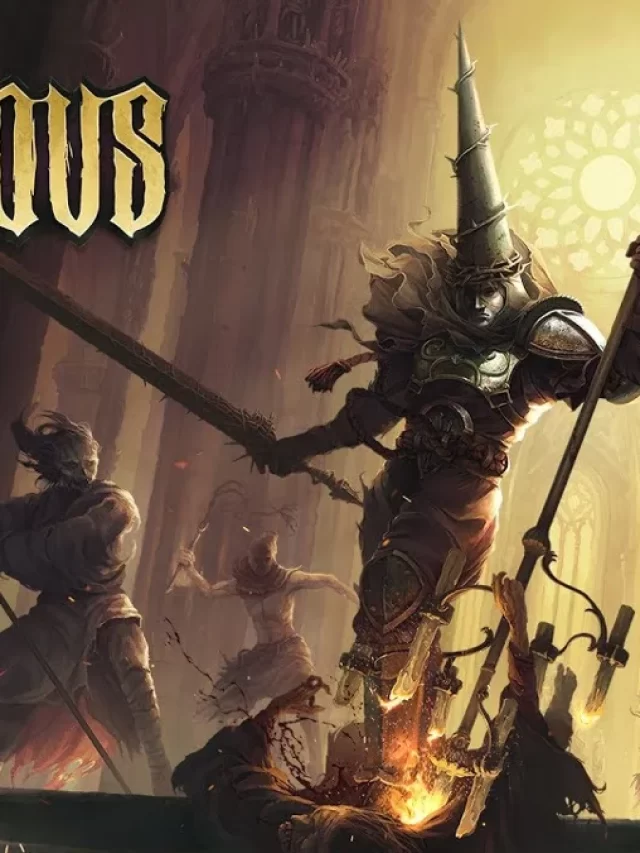Exploring the Stunning and Unique World of Blasphemous Game Art
Blasphemous, a critically acclaimed action-platformer developed by the Spanish studio, The Game Kitchen, has become known for its tight gameplay mechanics and challenging combat and its incredibly unique and atmospheric Blasphemous game art. While pixel art is not uncommon, Blasphemous pixel art has every gaming enthusiast powered up. The game heavily utilises Spanish folklore, religious iconography, the Gothic architecture of Seville, and a general sense of macabre.
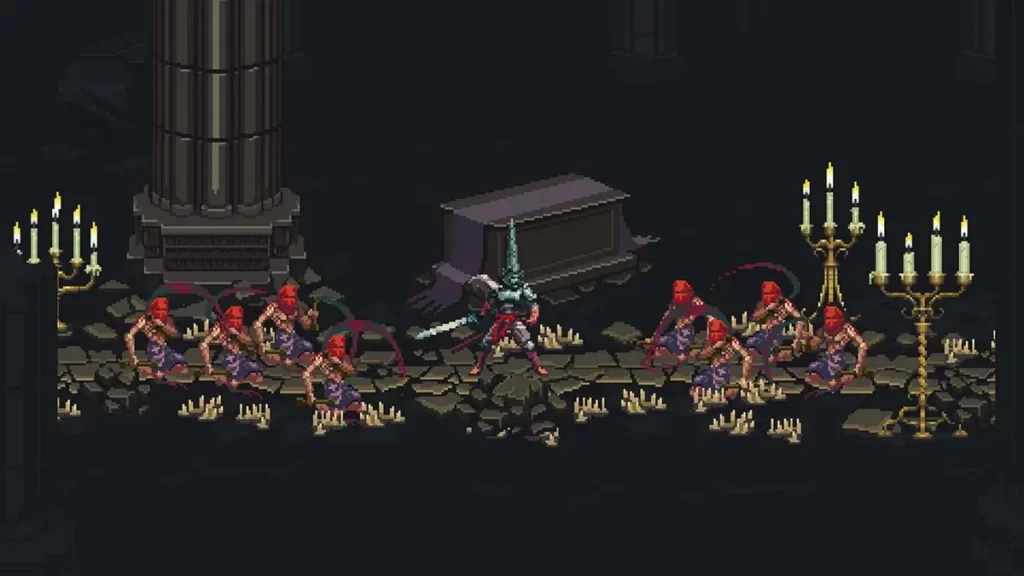
Today, we talk about the very Blasphemous concept art, which has us swooning for adventure. If you wish to get into the very details of this flamenco-inspired game, you can check out The Art Of Blasphemous, the official Blasphemous art book by the studio chronicling the concepts and designs of the game.
Pixel Art Blasphemous: A ‘Purist’ Fantasy
Designer Enrique Colinet had always had a vision when it came to Blasphemous art. He was rigid when it came to creating a beautiful pixel-laid design. However, “That became a real problem because we were limited by the pixel art style, by the size of the screen, by the graphics, because we were trying not to use any fancy shaders or helping ourselves with some 3D elements to make something easier.”
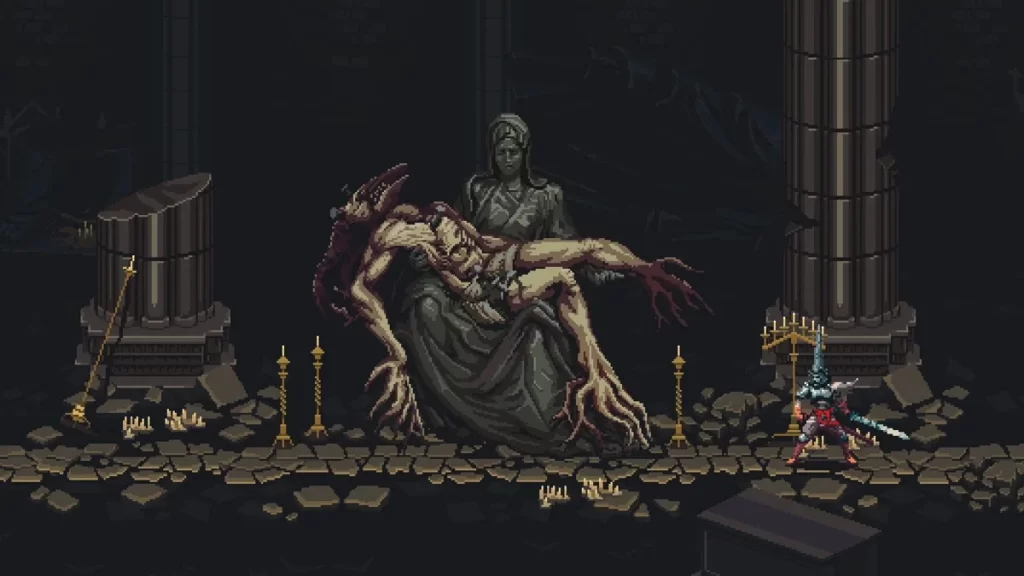
With exquisitely detailed sprites and silky smooth animations, Blasphemous art is a masterwork of pixel art. It uses rich colour and texture palettes heavily in the game environments and characters. The user plays as the ‘Penitent One.’ His moves and attack feel powerful thanks to the fluid animations that bring his flowing robes and the hideous foes to life. It serves as a good preface to the game’s quasi-Catholic imagery, which includes, but is not limited to the images of baptism, vampires, the crucifixion, Christ’s blood, and the consumption of sacramental wine.
Blasphemous Art Style: Inspirations
One look at Blasphemous concept art, and one would instantly find a callback to games such as the Dark Soul franchise and Castlevania. The game also relies heavily on Metroidvania, a sub-genre of non-linear progression, where the game is understood better through quests and exploring the hidden chambers and map elements.
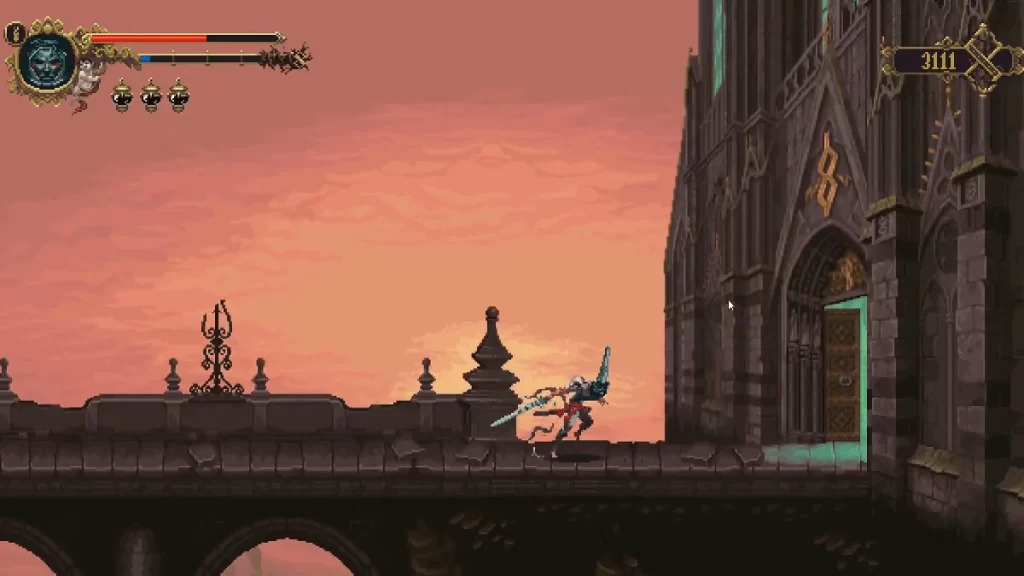
Blasphemous art exhibits the Andalusian architectural influence throughout. While on the quest, you would notice dilapidated cathedrals, elaborate statues, and winding, maze-like structures, reminiscent of Seville’s historical sites. This architectural design evokes a sense of oppressive grandeur and decay, which is ideal for the game’s gothic horror aesthetic.
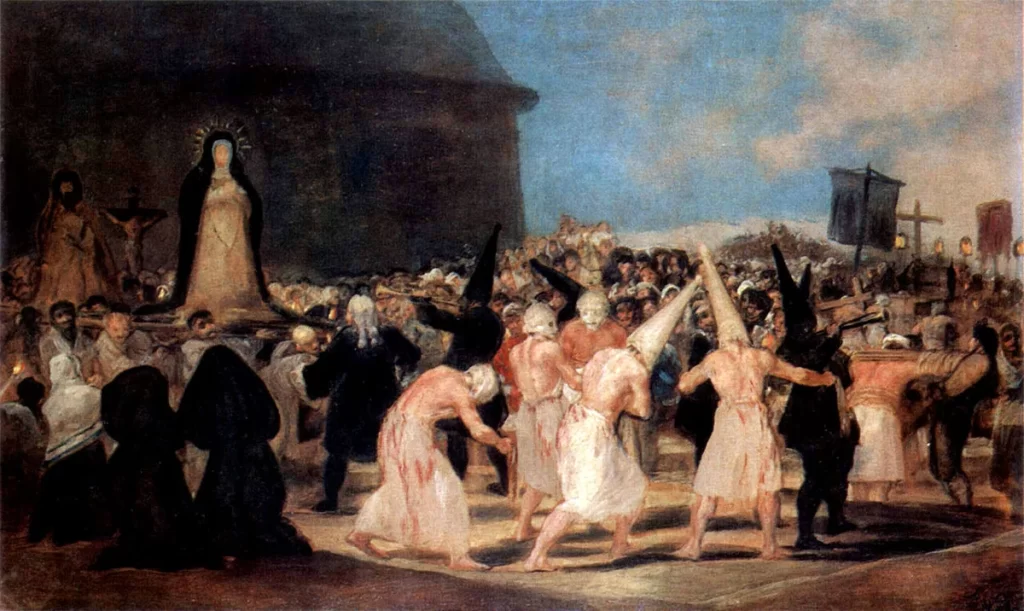
Enrique Cabeza, the creative director, credits Blasphemous game art to Spanish painters, the likes of Jusepe de Ribera, Diego Velázquez, Francisco de Zurbarán, and Bartolomé Esteban Murillo. He recalls, Francisco Goya’s ‘A Procession of Flagellants’ as a major influence. The thorned helmet worn by the protagonist is similar to the pointed sanbenito hats of the penitents in that painting, which are a symbol of public humiliation; a sign of cruelty and zealotry.
Themes in Blasphemous
Blasphemous’s surroundings are replete with references to guilt and religious doctrine. The architecture is representative of a grotesque society engrossed in its religion. It portrays a world distorted by blind devotion and the weight of sin, delving into the darker sides of religious fervour. The themes of faith and superstition are heightened by blurring the boundaries between religious art and popular culture. The eerieness is magnified by strategic silence and gory nail-biting music.
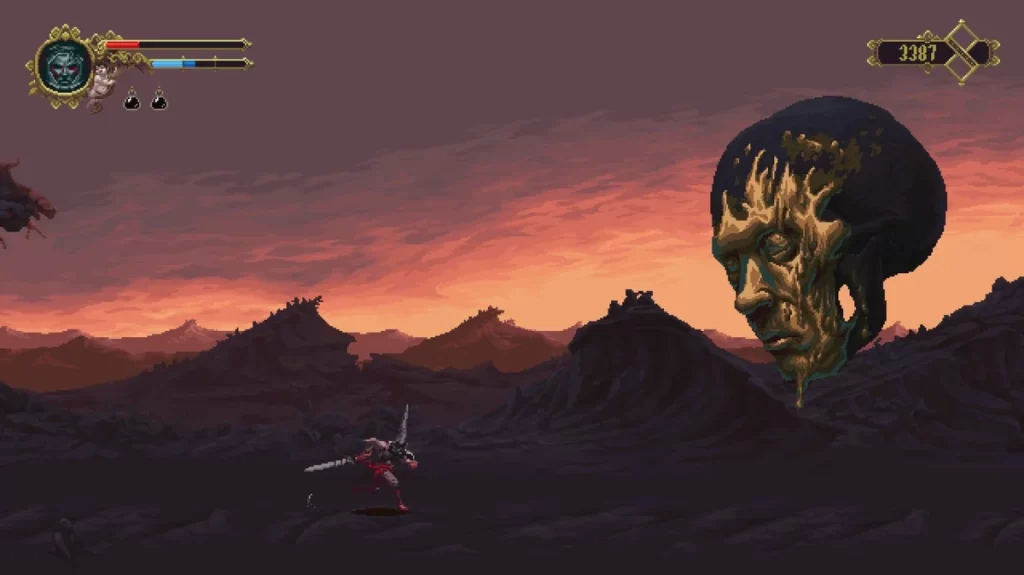
Blasphemous Fan Art: The Community’s Love
The Blasphemous art style has inspired a growing community of fans who create their interpretations of the game’s world. Blasphemous fan art has flourished across various social media platforms, from intricate illustrations to digital renditions of the game’s blade weapon art. What sets Blasphemous fan art apart is the way it captures the melancholic beauty of the game. Fans take the original designs and inject their own creativity, sometimes reinterpreting iconic characters like The Penitent One or The Sisters of the Wound. However, the most popular remains the Blasphemous blade weapon art like the Mezcal Blade, the Elden Ring, or the Rosary of the Wounded.
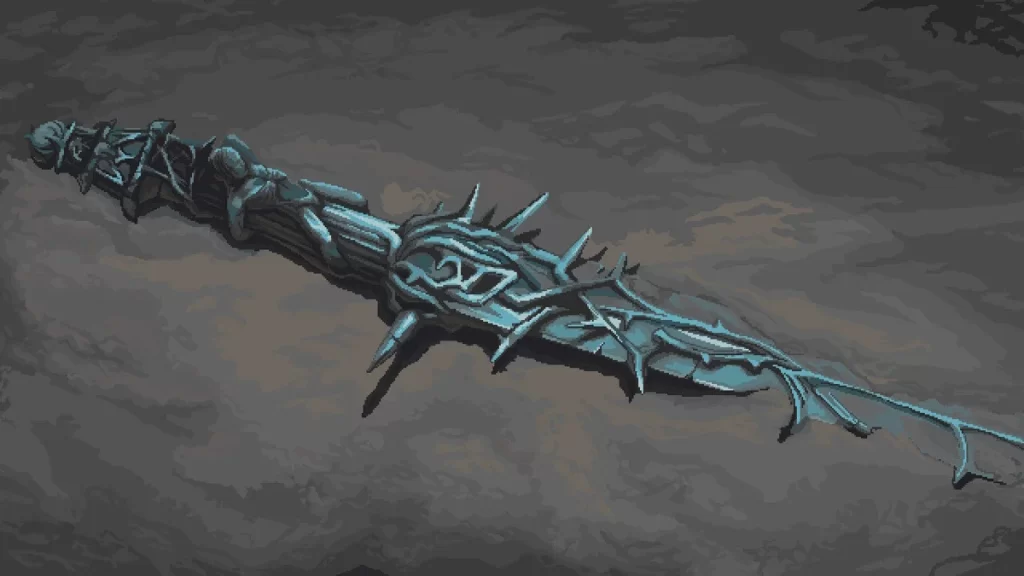
Image Courtesy – Team17 via YouTube
Contributor



